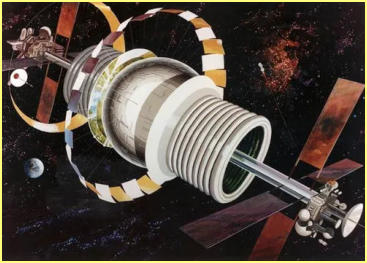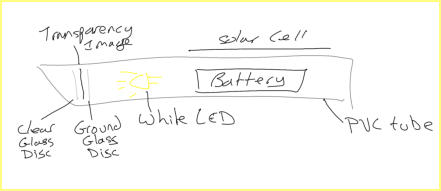Jerry Stone
Questions and Answers from the recent talk on Island Zero
Mark Andrews
Would an inflatable habitat not be at risk from debris in space puncturing it?Also having plant growing
spaces separate would take a lot more energy to keep them warm would they not?
Hi Mark.
This is a good question, but fortunately it isn’t a problem. The ISS and some Space Shuttle orbiters have
been hit, but not actually punctured. The inflatable units will be made of strong material so it shouldn’t be
a major issue. In fact, Bigelow’s 3rd inflatable unit - the Bigelow Expandable Activity Module (BEAM) -
has been attached to the ISS for 8 years so far. It is not inhabited but astronauts do go into it periodically to make checks and it has never had any problems.
Where the agriculture rings are separated from each other or open wouldn’t really make any difference with regard to heating, though it would make water supply a
bit more complicated.
Peter Jenkins
A very thought-provoking lecture – thank you. Theoretically, we don’t need to start from scratch to identify some of the problems and solutions required for a project
like Island Zero. Science Fiction writers have been pondering similar problems for decades and devising clever solutions! For one example, I refer to Arthur C
Clarke’s book ‘3001 The Final Odyssey’, which was written in 1997, including details of a space station anchored to Earth. I have been trying out the Microsoft Co-
Pilot Artificial Intelligence (AI) tool on my Windows 10 PC, which is based on Bing to research all sorts of topics. I found it to be quite powerful; it presented answers
to my questions in a very useable form, AND provided links to relevant source materials. It certainly knows about the ‘3001’ book text, with links to research taking
place on various topics such as the space elevators. Worth a look?
Hi Peter,
I’ve read “3001” and also Arthur’s other book; “The Fountains of Paradise”. Although we could theoretically build a space elevator, the problem is producing 36,000
km of the appropriate material - either carbon nanotube or graphene. It would also take a lot longer and cost considerably more.
One point about Island Zero is that it could be developed right now and relatively cheaply.
As for SF providing answers to some issues, I’ve said for some years that a lot off science fiction is just science fact that hasn’t happened yet, but we definitely need
to actually have people living under different gravity level in order to gain the medical knowledge of their effects.
T Elson
Do you foresee any issues occurring with the difference in gravity from head to toe
The answer to this is that is depends on the radius of the structure and the rate of rotation.
Although it’s been claimed that people could tolerate 6rpm or even higher with adaption, with a small radius I believe that may indeed be a problem, but only with
regard to the speed of rotation.
With a radius of just 25 metres, even at 6 rpm, the difference in simulated g-level over 2 metres - head to foot - would only be 0.08g - less than 1/10g and not really
noticeable. A bigger issue may be the Coriolis effect, which will mean that pouring a liquid will have a different effect depending on which way you are facing!.
Geff Briant
On the basis that it is far easier to build this now than it was 20 years ago then why shouldn't we wait another 20 years when it will be even easier.
You could ask why not wait yet another 20 years … and so on?
The fact is that materials are unlikely to improve substantially. The only likely major issue will be the cost of launching the components, which has reduced
considerably with the development of reusable boosters. As I mentioned, this will improve further once SpaceX’s Starship is in full operation, but this should only be
within the next couple of years.
The current cost per launch of their Falcon Heavy - Payload 63.8 tonnes - is $150 million, while Elon Must expects Starship - Payload 150 tonnes fully reusable - to
be “tens of millions of dollars”. This could mean a reduction of more than 90%.

Artificial Saturn
Details:
Attached is a basic diagram of the fake Saturn construction.
It is simply a back-illuminated transparent image. The image
itself was printed onto a transparency slide (via
https://www.digitalslides.co.uk/). A ground glass disc is placed
behind it to diffuse the light from a white LED, and a plain glass
disc placed in front to protect the outward-facing side. The LED
is powered by a garden solar light circuit allowing it to be a self-
contained battery-powered unit that comes on at night. The
whole thing is then placed into a PVC tube for protection.
In our case the image is placed ~100m from the Patrick Moore
Building where the Dobsonians are usually set up outside, and
the image was printed at a size so that from 100m it appears to
be the true angular size of Saturn at its closest to Earth. This
distance also allows the Dobsonians to reach focus without
needing extension tubes. (It will appear about 1/3 larger from
where you were set up).
If one didn’t have such a constant distance available, then it
would be possible to collimate the image to infinity by placing a
lens in front. The advantage being that it could be placed at any
distance from the telescope and it would remain in focus and not
change scale. The disadvantage would be that the alignment of
the collimated image and telescope becomes much more critical
such that it would not be possible for multiple telescopes to view
the image at once.
I hope this helps,
David
(David Campbell)



























